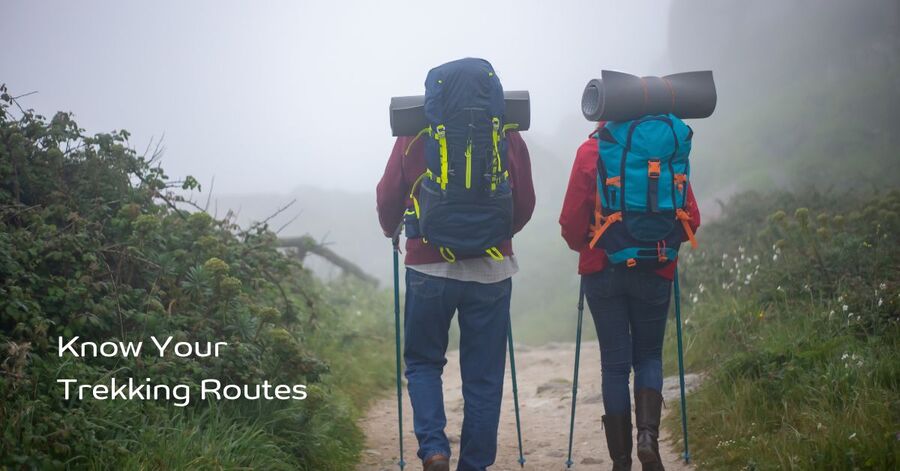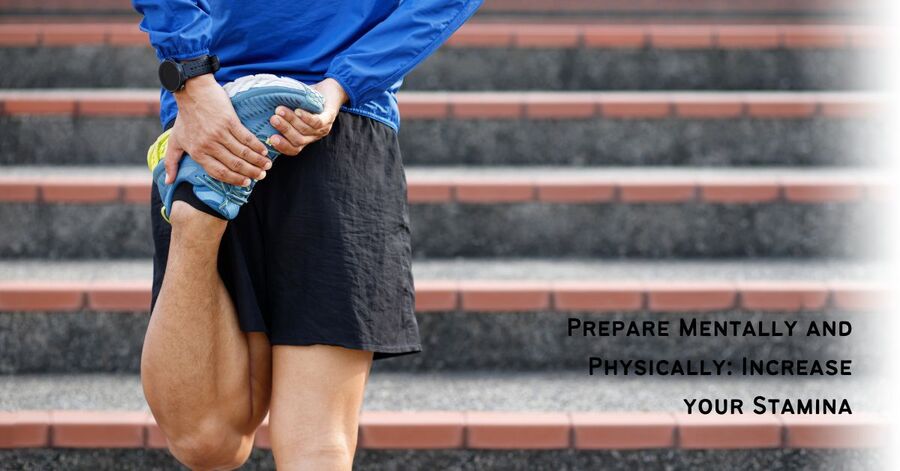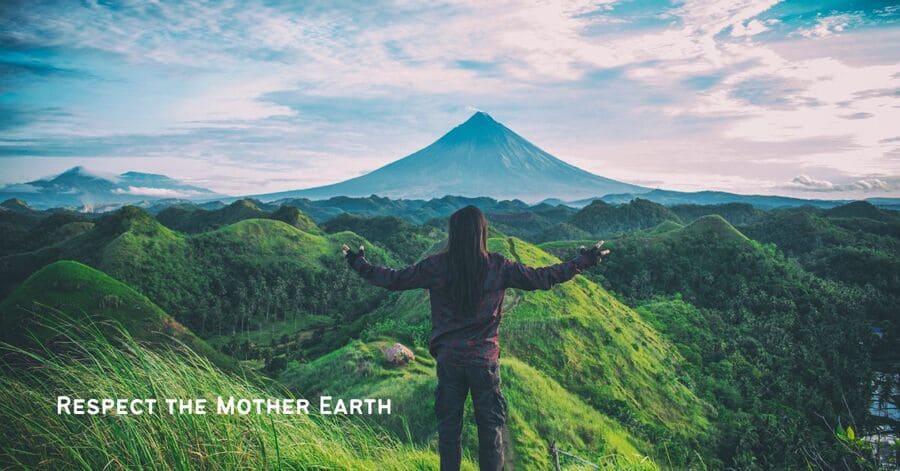
How to Prepare for Your First Trek?
Discover how to prepare for your first trek with essential tips on fitness, gear, research, and mental readiness. Embark on your adventure confidently!
Embarking on your inaugural trekking adventure is an exhilarating endeavour, offering an opportunity to immerse yourself in the splendour of the great outdoors while challenging your physical and mental limits. As the popularity of trekking continues to soar, more individuals are discovering its myriad benefits beyond mere recreation.
Trekking is not merely a recreational pursuit; it is also a gateway to numerous health advantages. From bolstering cardiovascular fitness to boosting energy levels, trekking serves as a dynamic means of enhancing overall well-being. Moreover, it provides a welcome respite from the frenetic pace of daily life, allowing trekkers to rejuvenate amidst nature’s serene embrace.
How to Prepare for Your First Trek? – A Beginner’s Guide
Are you ready to embark on your first trekking adventure? Whether you’re planning a day hike or a multi-day expedition, proper preparation is key to ensuring a safe and enjoyable experience. If you’re contemplating your inaugural trekking escapade, you’re in the right place! Below is a comprehensive guide on how to prepare for your first trek, ensuring you derive maximum enjoyment and fulfilment from the experience. Let’s delve into the essential steps to embark on your trekking journey:
1. Research Your Destination: Choose the Right Trek
Embarking on your first trek is an exciting adventure that promises breathtaking views, exhilarating challenges, and unforgettable experiences. However, before you lace up your boots and hit the trail, it’s essential to choose the right trek for your skill level, fitness, and interests. Here’s how to select the perfect trek for your first outdoor adventure. Here’s a guide to help you choose which trek is best for you.

- Difficulty Level: When choosing a trek, consider the difficulty level that matches your fitness level and hiking experience. Opt for beginner-friendly treks with well-marked trails, moderate elevation gain, and manageable distances. Look for treks rated as easy to moderate, especially if you’re new to hiking or have limited experience in the outdoors.
- Duration: Consider the duration of the trek and how many days you’re willing to commit to the adventure. For your first trek, start with shorter routes that can be completed in a day or two. Day hikes are a great way to ease into trekking and experience the beauty of nature without the commitment of a multi-day expedition. As you gain experience and confidence, you can gradually tackle longer treks spanning several days or even weeks.
- Location: The location of the trek plays a significant role in determining the scenery, terrain, climate, and overall experience. Choose a trekking destination that appeals to your interests and preferences, whether it’s lush forests, towering mountains, tranquil lakes, or rugged wilderness. Consider factors such as accessibility, weather conditions, and seasonal variations when selecting the location for your first trek.
- Consult Experts: If you’re unsure about which trek to choose or need guidance in planning your adventure, don’t hesitate to seek advice from experienced trekkers, outdoor enthusiasts, or professional guides. They can offer valuable recommendations, share insider tips, and help you tailor your trekking experience to suit your preferences and goals.
2. Choosing the right Trekking Company:
Once you have settled on a trek, it’s time to select a trekking company. Many companies offer adventure treks and each has its unique offerings.
Start by researching different trekking companies online. Read reviews, testimonials, and recommendations from other trekkers to get an idea of their reputation and track record. Look for companies that have a strong online presence, positive reviews, and a history of organizing successful treks.
Consider the experience and expertise of the trekking company, including their knowledge of the trekking route, local terrain, and environmental conditions. Look for companies with experienced guides and staff who are familiar with the destination and can provide expert guidance and support throughout the trek.
3. Prepare Mentally and Physically: Get Fit

Once you’ve chosen your trek, it’s time to prepare mentally and physically for the adventure ahead. Set realistic goals, visualize success, and cultivate a positive mindset to overcome challenges and stay motivated along the way.
- Trekking can be physically demanding, so it’s essential to prepare your body beforehand.
- Incorporate cardiovascular exercises, strength training, and hiking-specific workouts into your fitness routine to build endurance and strength.
- Engage in regular physical activity, such as hiking, walking, jogging, or cycling, to build your strength, endurance, and stamina for the trek.
4. Gear Up: Pack Wisely
Let us know what will you pack for your First Trek. The gear and clothing that you bring on your trek can make or break the experience. It’s important to choose the right items that are lightweight and comfortable so they won’t weigh you down during the journey. Here are some essential items that you should include in your trekking kit:
- Some of your identity documents like Adhar Card, and Voter ID.
- Invest in quality trekking gear, including sturdy hiking boots, moisture-wicking clothing, a waterproof jacket, and a comfortable backpack.
- Comfortable clothing, layers for warmth, sunscreen, a hat, and sunglasses.
- Don’t forget to pack essentials such as water bottles, snacks, a first-aid kit, a map, a compass or GPS device, and a headlamp or flashlight.
Plan Your Itinerary:
Plan your trekking itinerary carefully, taking into account factors such as distance, elevation gain, and the availability of campsites or accommodations along the route. Make sure to leave plenty of time for rest breaks, meals, and acclimatization, especially if you’ll be trekking at high altitudes.
Or if you trek with a trekking company, ask him for a proper trekking Itinerary with all the details and discuss the plans.
Practice Hiking Skills:
- Before your trek, take some time to practice hiking on local trails to familiarize yourself with different terrains and conditions.
- Practice using your trekking gear, such as adjusting backpack straps, wearing hiking boots, and using trekking poles.
Learn Basic Navigation:
- Familiarize yourself with basic navigation skills, including reading maps, using a compass, and following trail markers.
- Research your trekking route and create a detailed itinerary with landmarks, checkpoints, and emergency exit points.
5. Start your Trek
Finally, On the Trekking day remember to start slow and pace yourself on your first trek. Take the time to soak in the sights and sounds of nature, and enjoy the journey every step of the way. Don’t be afraid to take breaks when needed, and listen to your body to avoid pushing yourself too hard.
Here are some points to remember on your trek:
Always Check the Weather:
- Keep an eye on the weather forecast for your trekking destination.
- Be prepared for changing weather conditions by packing appropriate clothing layers and gear, including rain gear and extra insulation.
Stay Hydrated and Fueled:
- Proper hydration and nutrition are essential for a successful trek.
- Carry an adequate supply of water and snacks to stay hydrated and fueled throughout your hike.
- Pack lightweight, high-energy snacks such as nuts, dried fruits, energy bars, and trail mix.
Respect Nature and Wildlife:
- Practice Leave No Trace principles by minimizing your impact on the environment.
- Stay on designated trails, dispose of waste properly, and avoid disturbing wildlife.
- Take only photographs and memories, and leave nature as you found it for others to enjoy.
Be Prepared for Emergencies:
- Familiarize yourself with basic first-aid techniques and carry a well-stocked first-aid kit.
- Know how to recognize and treat common hiking-related injuries and ailments, such as blisters, sprains, and altitude sickness.
- In case of an emergency, know how to signal for help and have a plan for contacting emergency services.
Enjoy the Journey:
- Most importantly, remember to enjoy the journey and take in the beauty of your surroundings.
- Take breaks when needed, pace yourself, and listen to your body.
- Trekking is not just about reaching the destination but also about the experiences and memories you create along the way.

By following these tips and guidelines, you’ll be well-prepared to embark on your first trekking adventure with confidence and excitement. So lace up your hiking boots, pack your backpack, and get ready to hit the trails!
Here are some of the best treks with Firstrek:
| Rudraprayag, Uttarakhand | Location |
|---|---|
| Chopta Chandrashila Trek | Rudraprayag, Uttarkhand |
| Rudranath Trek | Chamoli, Uttarakhand |
| Kedarnath Trek | Rudraprayag, Uttarakhand |
| Kuari Pass Trek | Chamoli, Uttarakhand |
| Brahmatal Trek | Chamoli, Uttarakhand |
| Kedarkantha Trek | Uttarkashi, Uttarakhand |
Conclusion:
Preparing for your first trek may seem daunting, but with proper planning and preparation, you can embark on your adventure with confidence. By researching your destination, getting in shape, investing in the right gear, packing wisely, learning basic skills, knowing your limits, and planning for emergencies, you’ll be well-equipped to tackle the trail and create unforgettable memories in the great outdoors. So lace up your boots, pack your backpack, and get ready to explore the beauty of the wilderness on your first trek!
FAQs on How to Prepare for Your First Trek?
What should I pack for my first trek?
Pack essentials like sturdy boots, weather-appropriate clothing, water, snacks, first aid kit, navigation tools, and a backpack.
Do I need to hire a guide for my first trek?
While not always necessary, hiring a guide can enhance safety and provide valuable insights into the local terrain, culture, and wildlife.
How can I prevent altitude sickness during my trek?
Acclimatize gradually by ascending slowly, staying hydrated, eating light meals, and listening to your body. Consult a healthcare professional for personalized advice.
How do I choose the right trekking destination?
Consider factors like difficulty level, terrain, altitude, weather, and personal preferences. Research destinations that align with your interests and fitness level.
How do I train for my first trek?
Start with regular cardio and strength exercises to build endurance. Gradually increase intensity and duration as you approach your trek date.